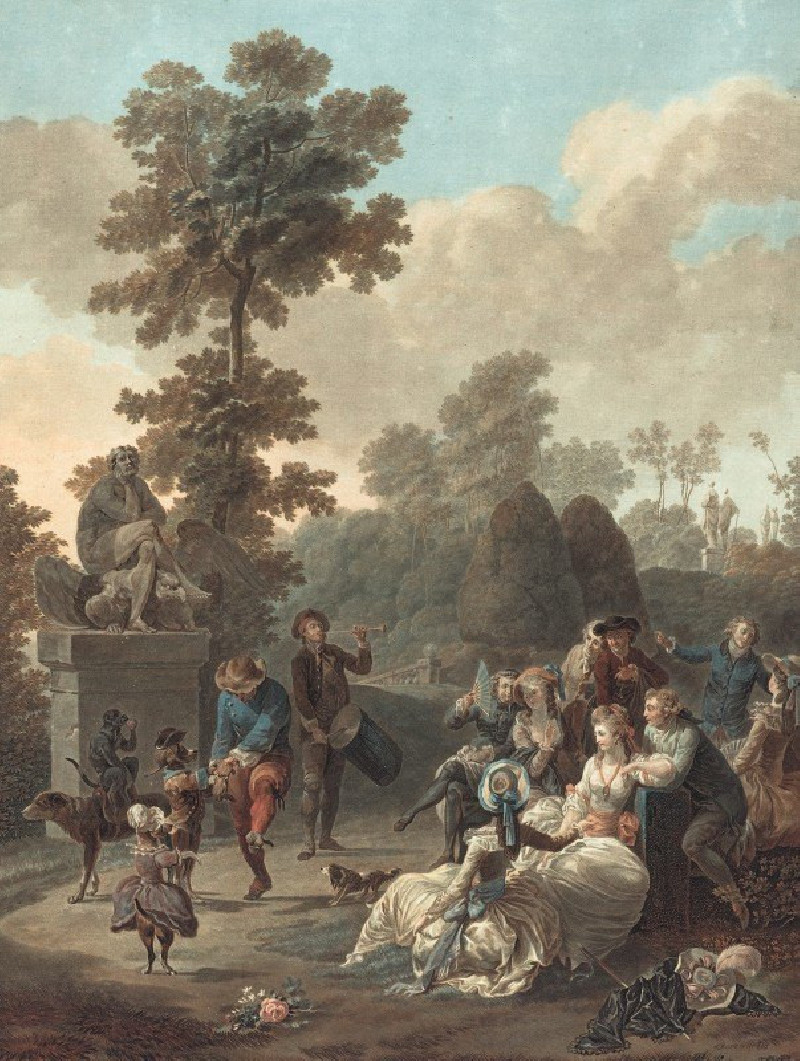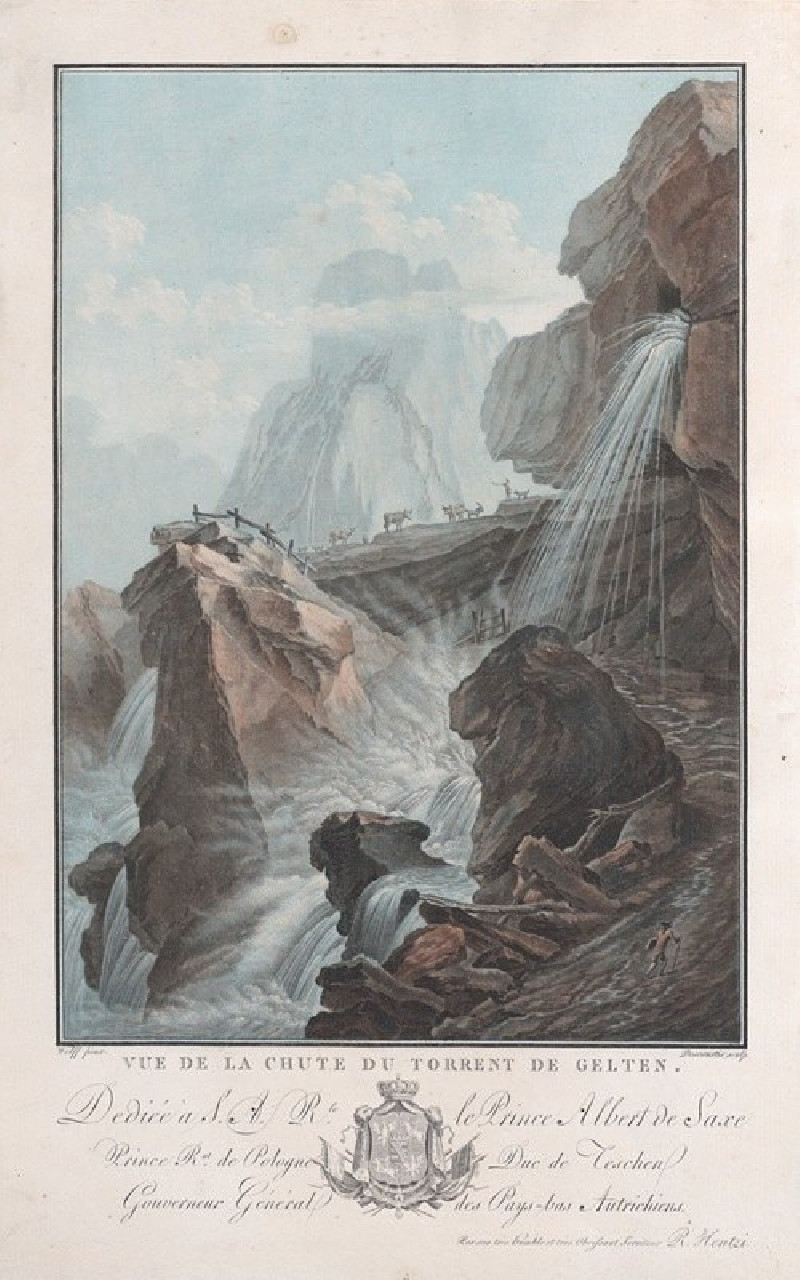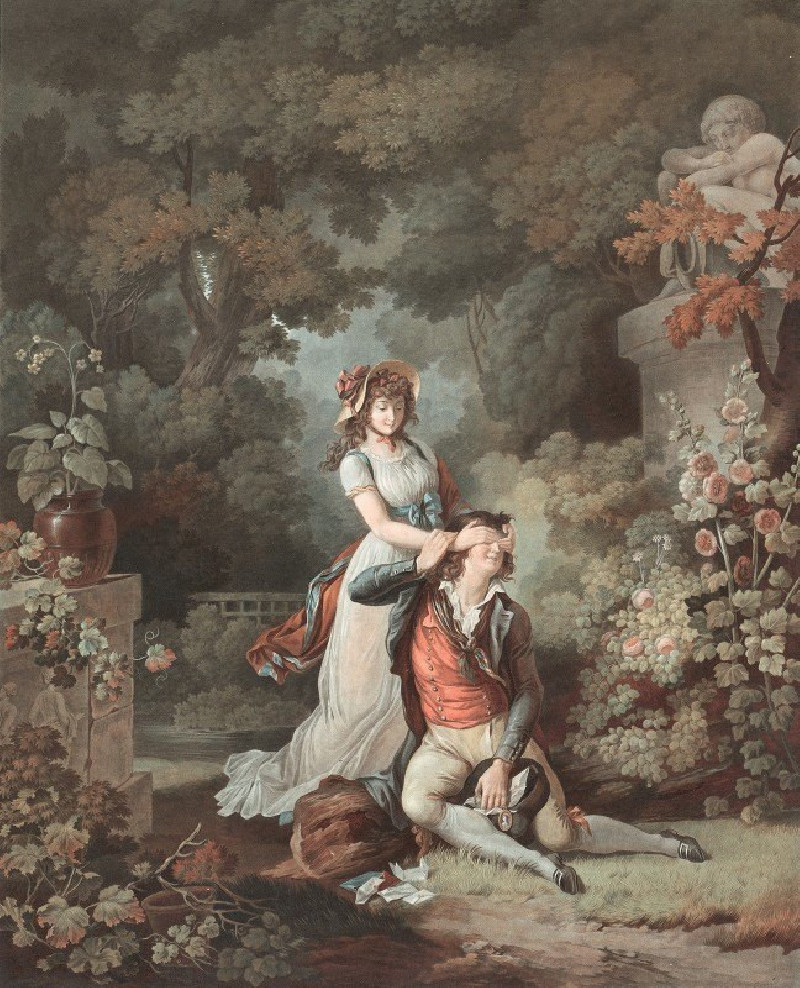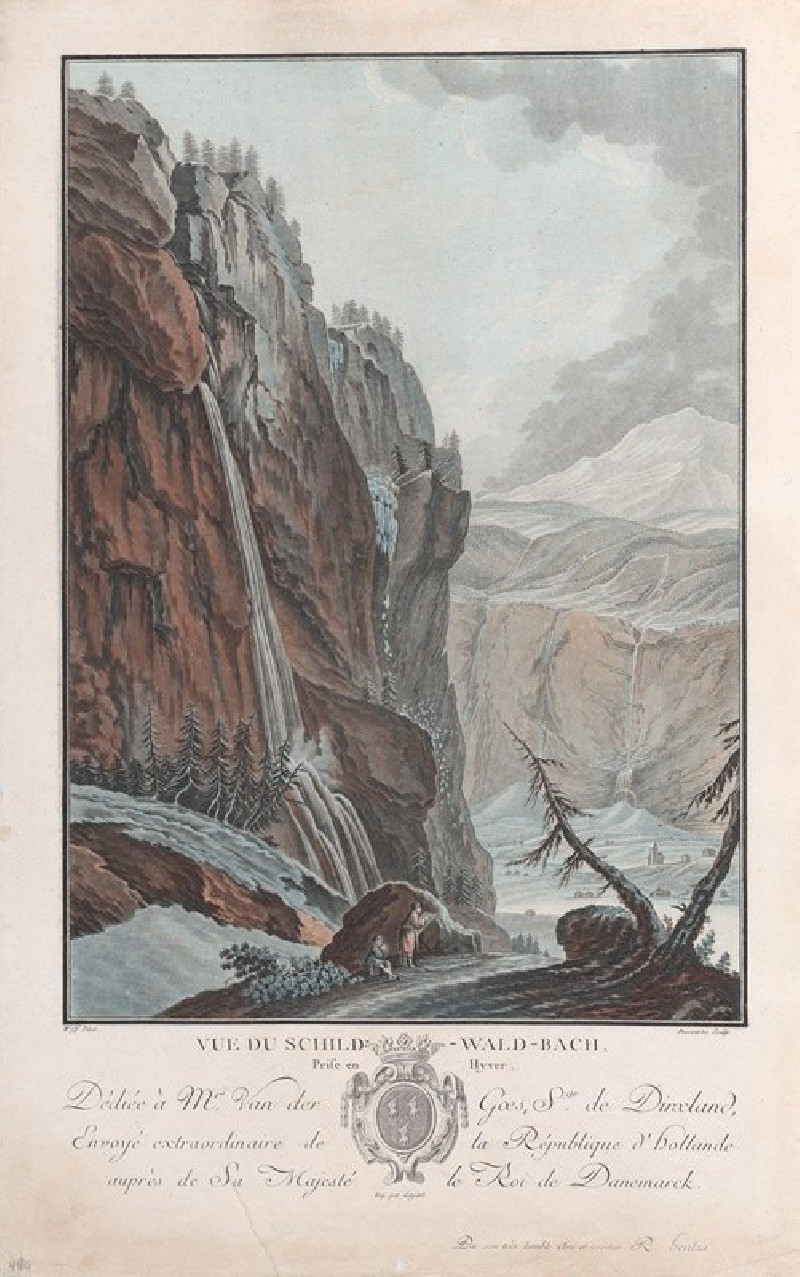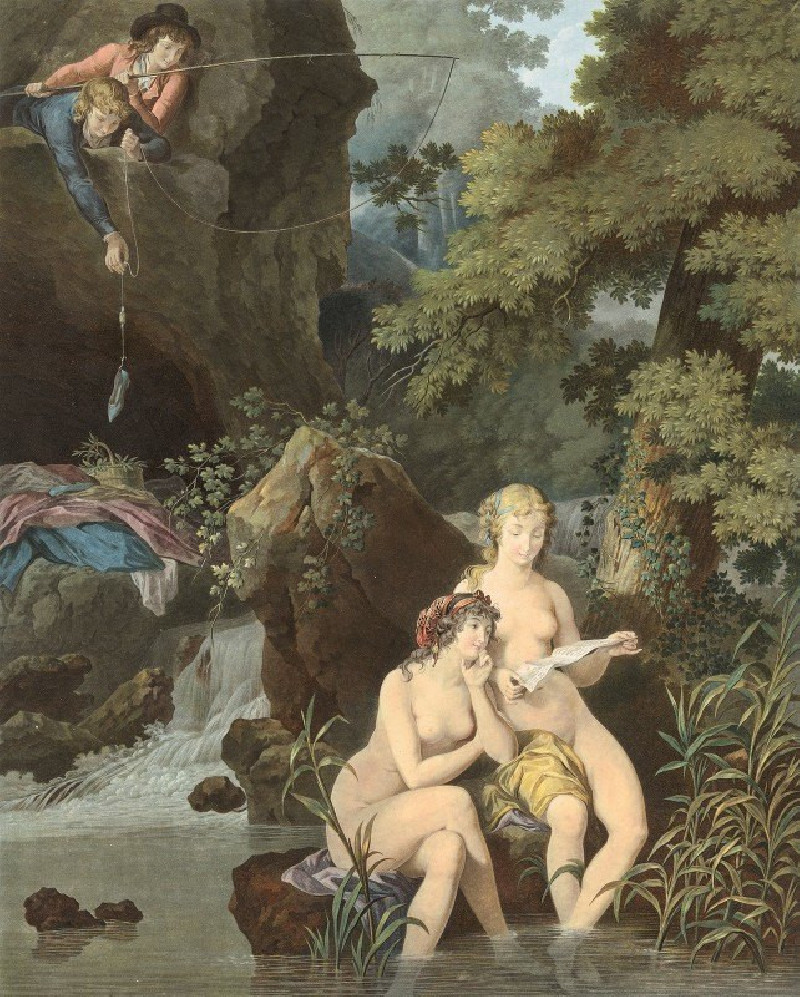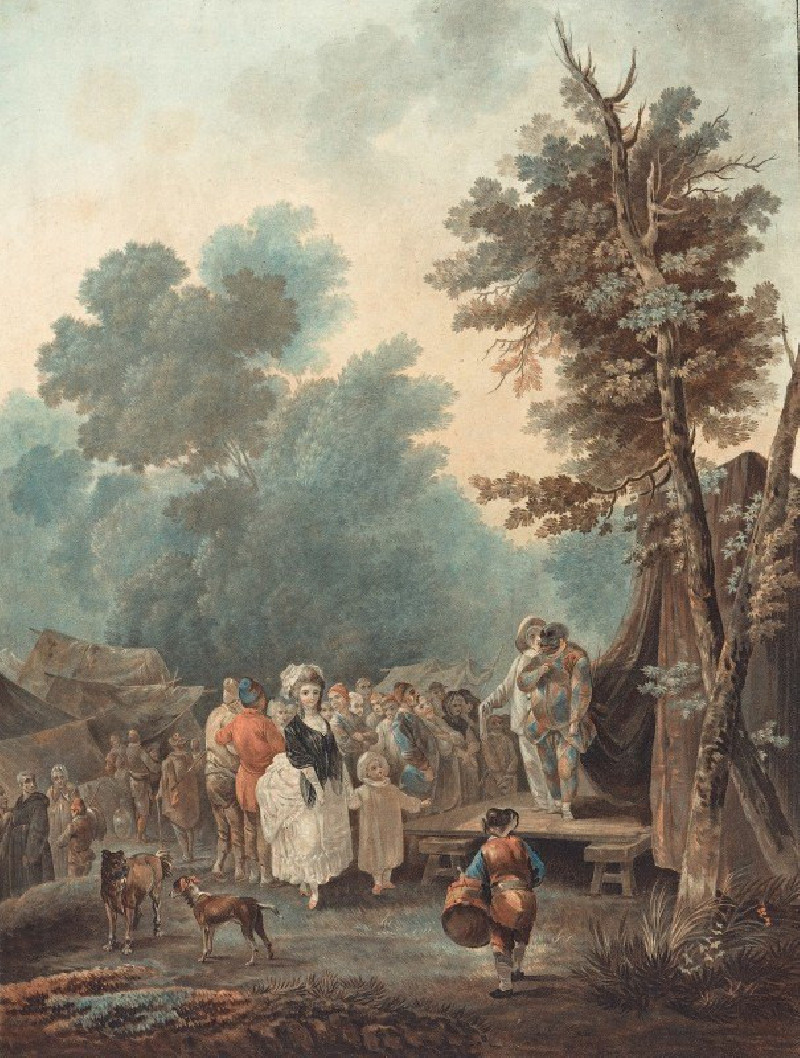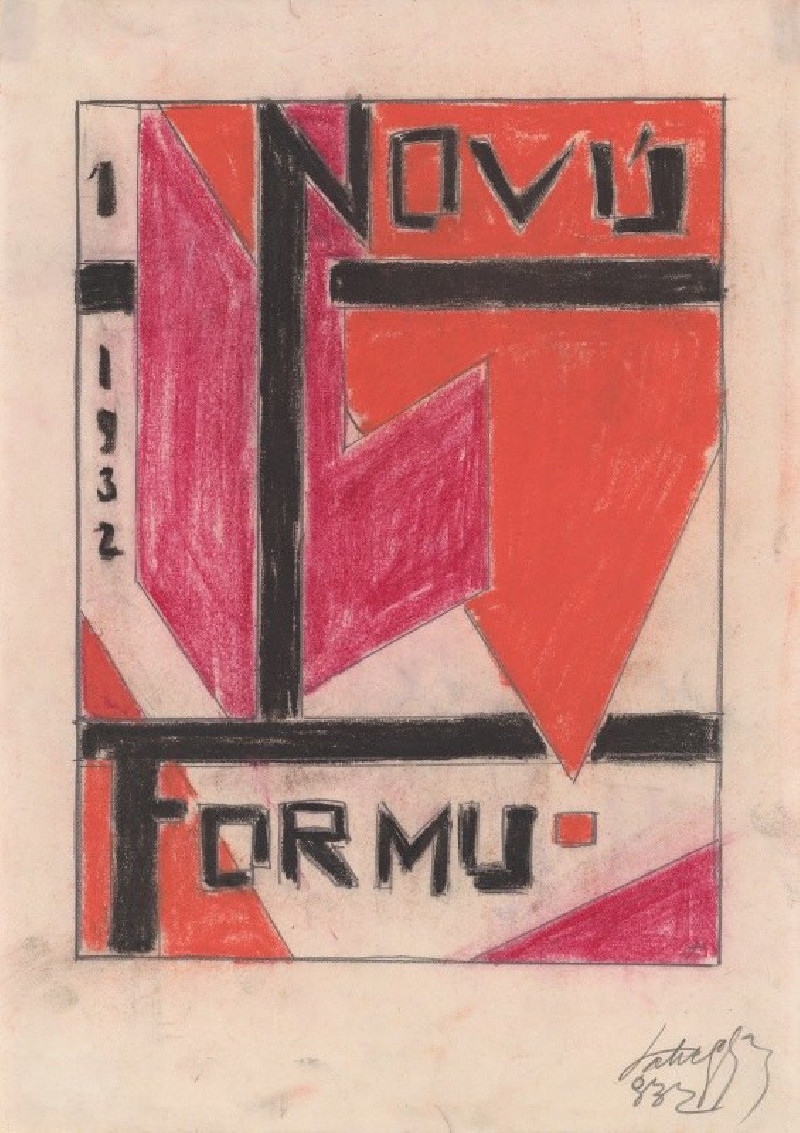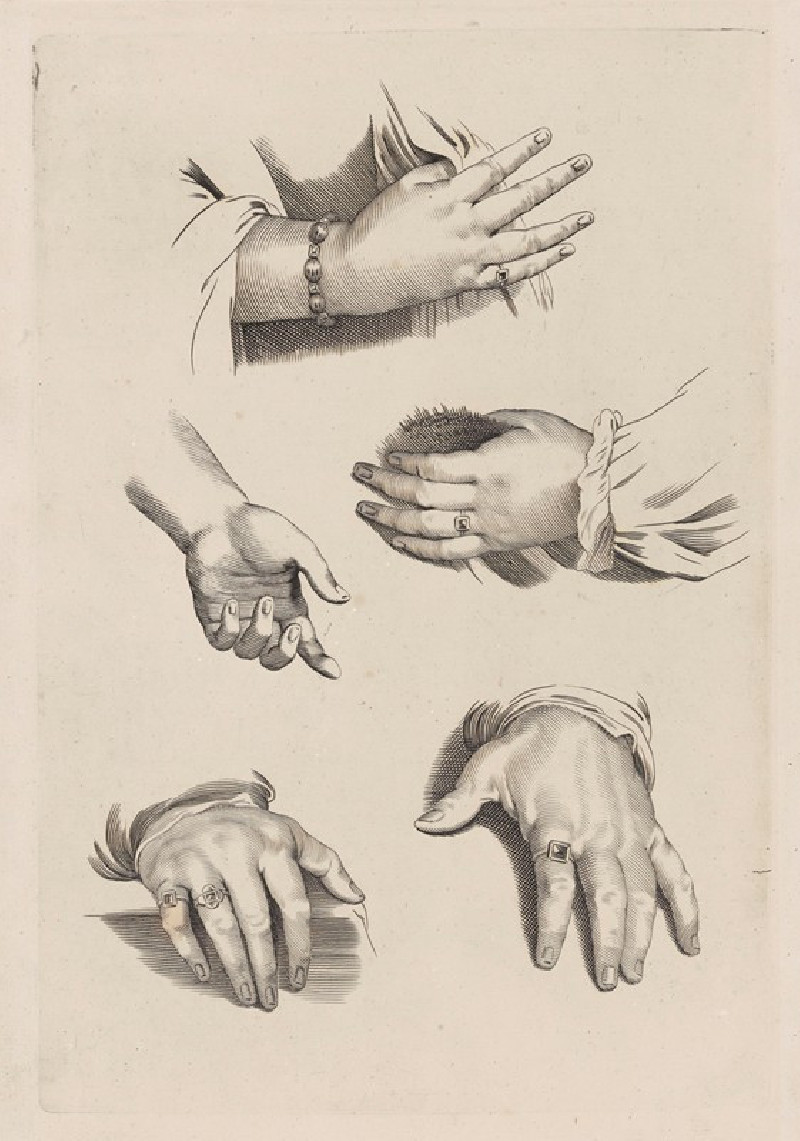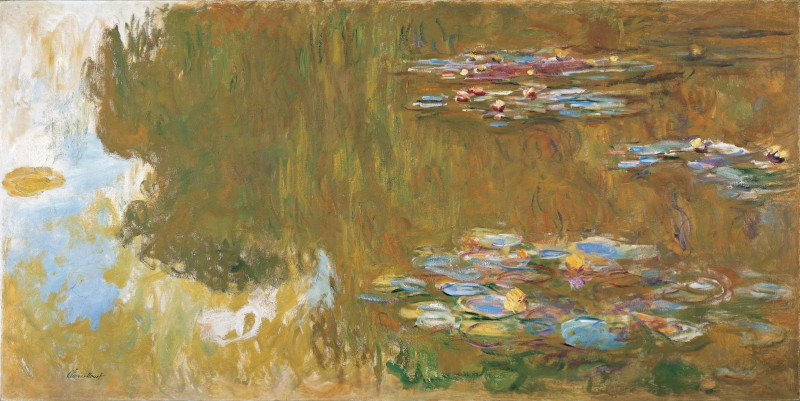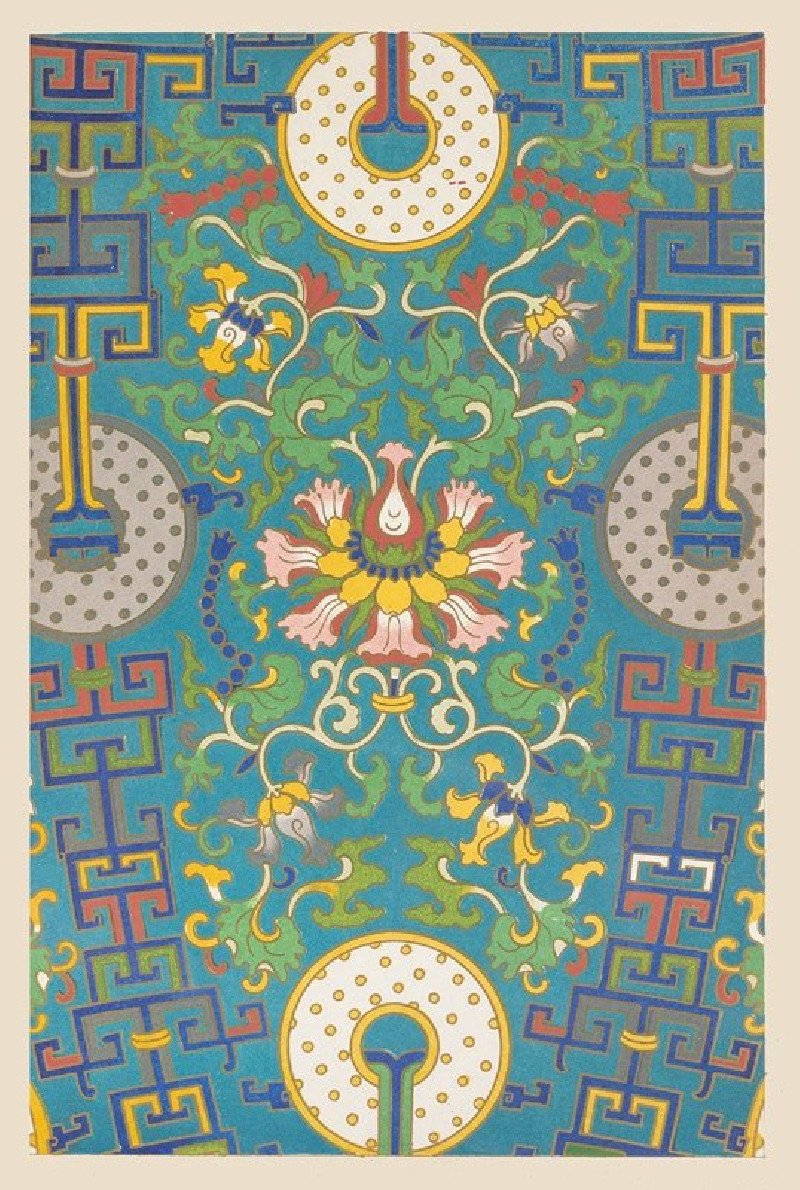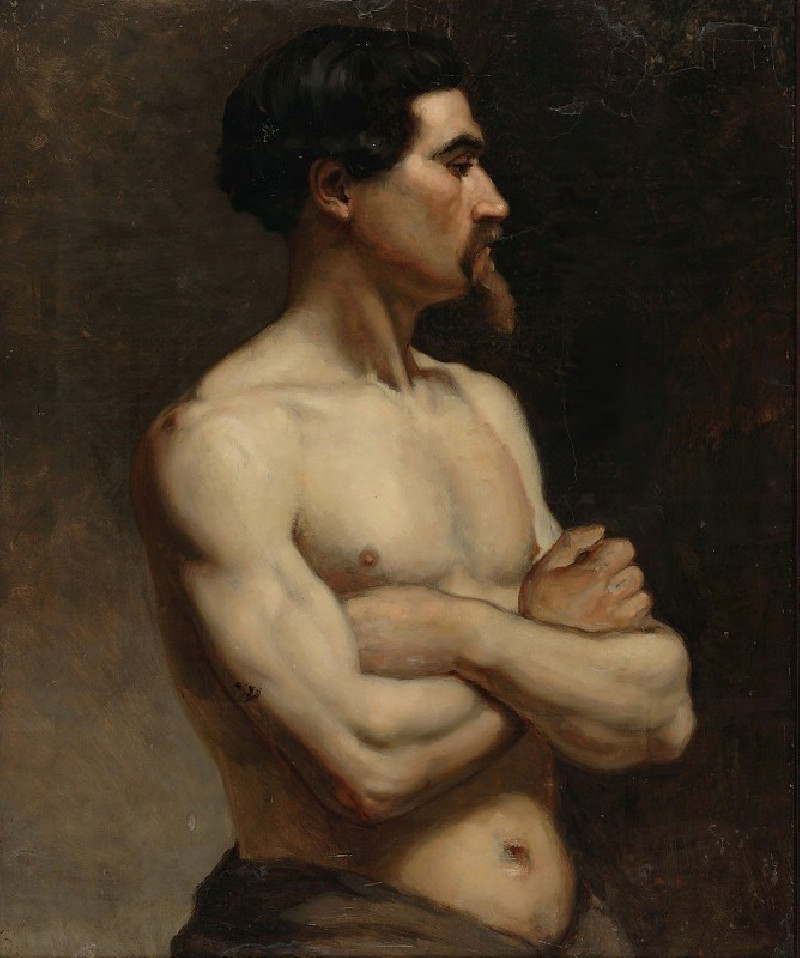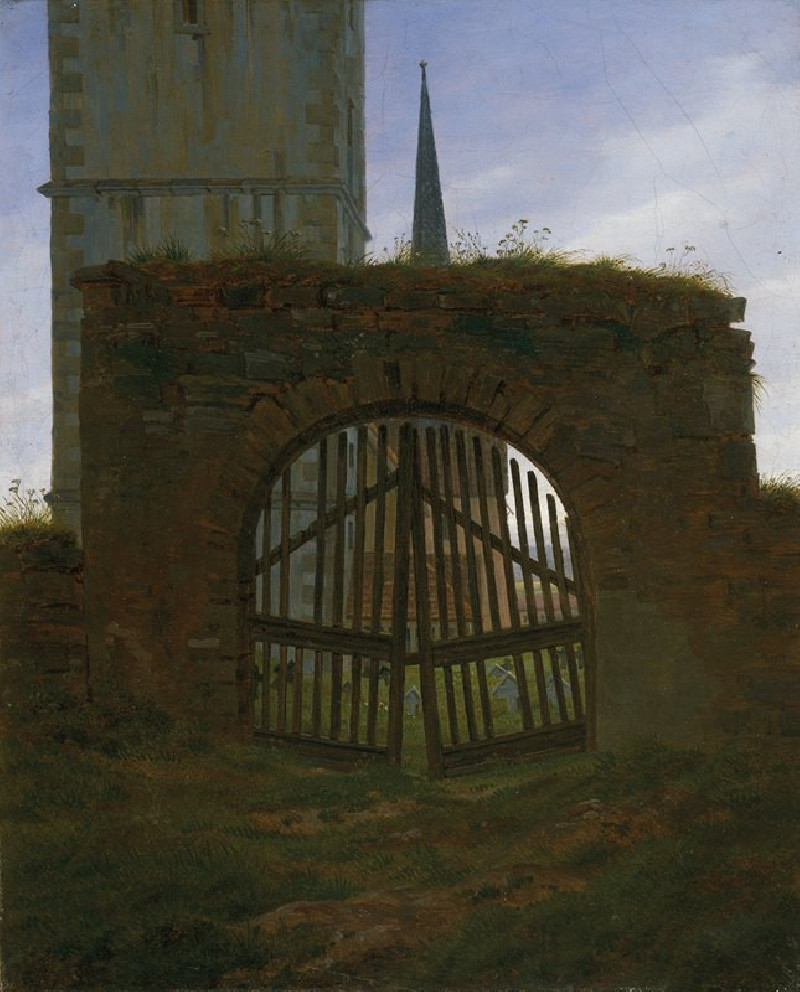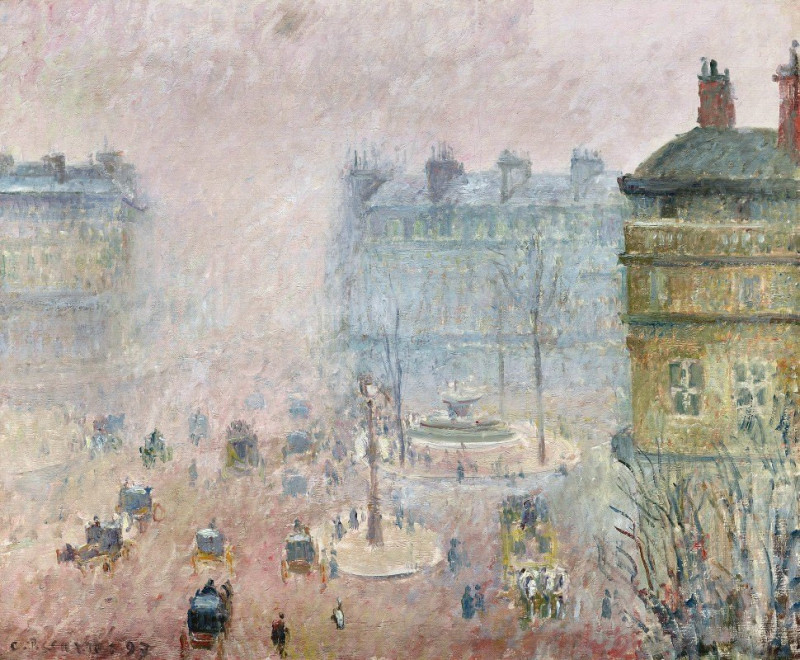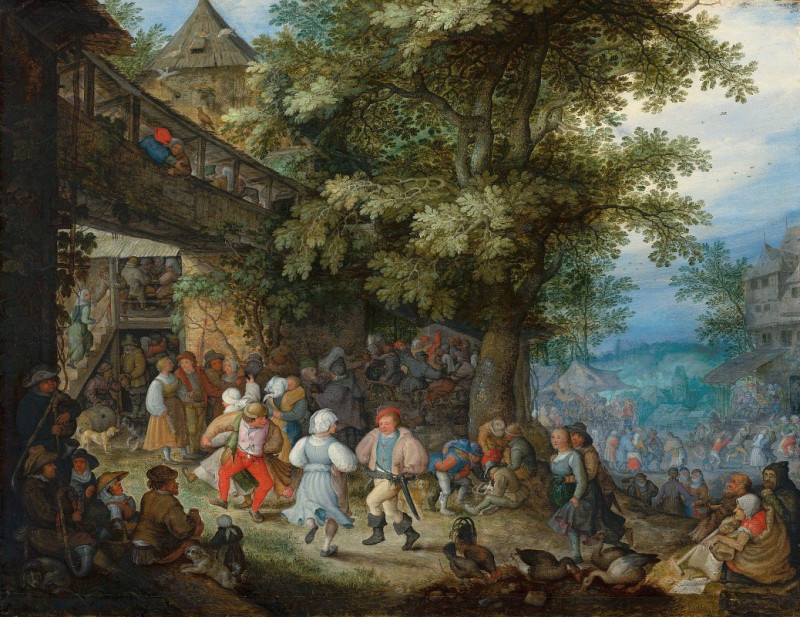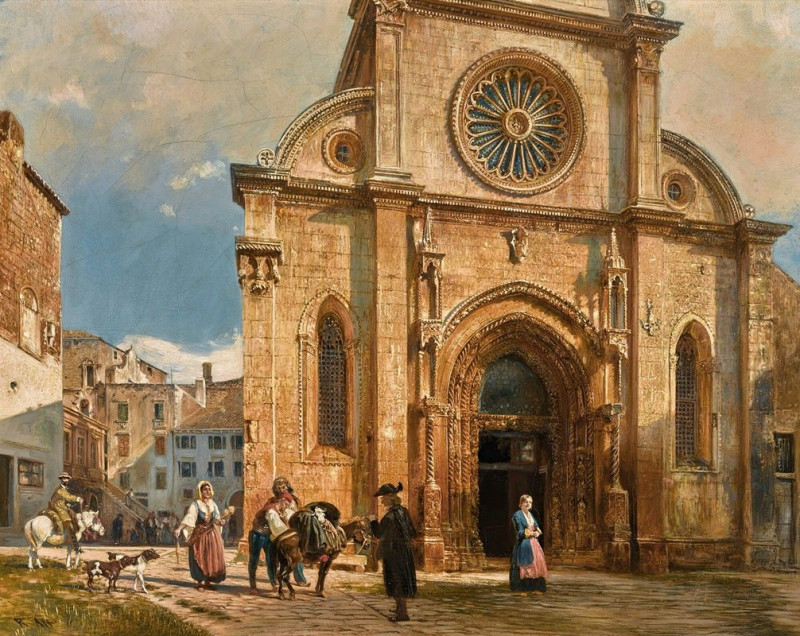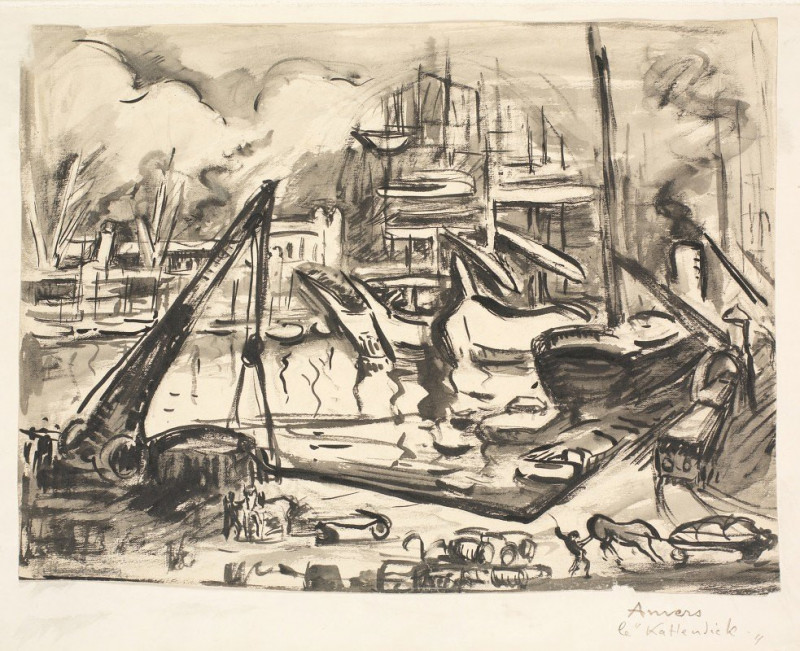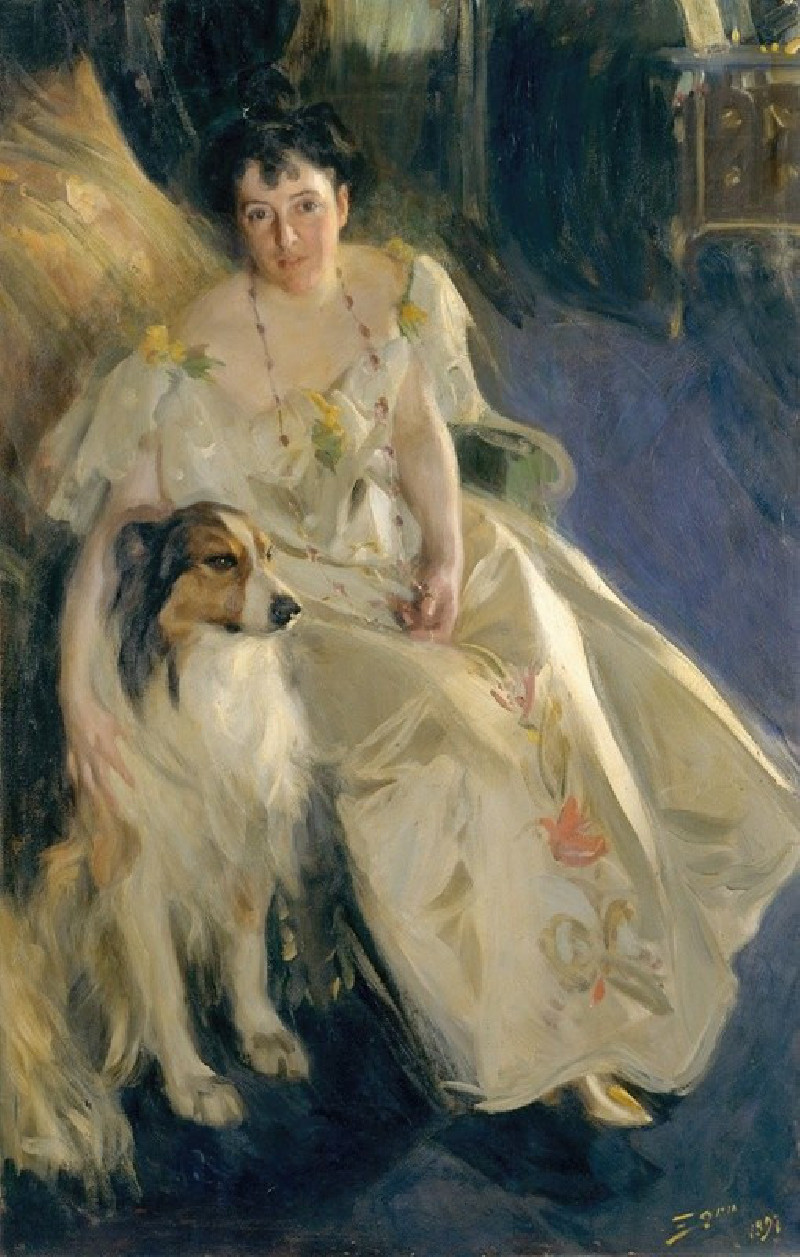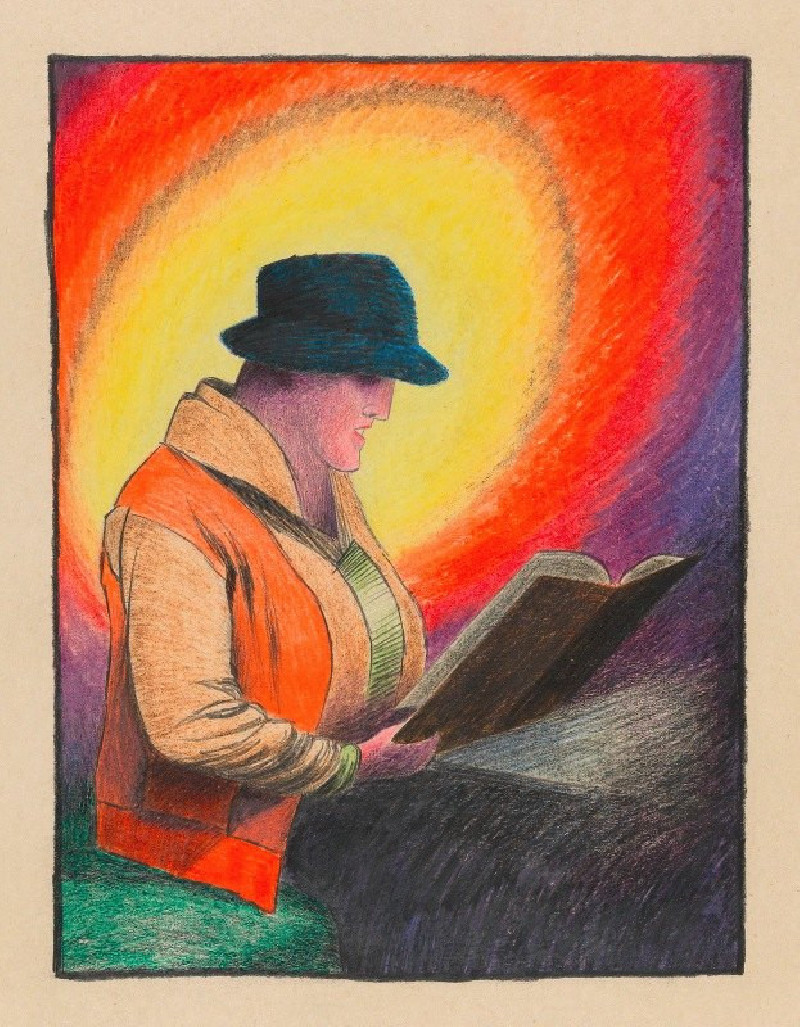Le Tambourin (c. 1789)
More about this artwork
Delivery
Returns
Charles-Melchior (b. 1753, Paris, d. 1820, Paris) was a pupil of Jean-François Janinet and, like him, specialized in the production of colour prints using aquatint and wash-manner. Among his earliest known works is a series of four engravings of views of Paris and Rome after paintings by Pierre Antoine de Machy, which appeared in 1784. He collaborated with Janinet on the illustrations for Vues remarquables des montagnes de la Suisse (1785), which were engraved after several artists. He is best known, however, for his four colour prints after the genre scenes of Nicolas-Antoine Taunay, notably the Village Wedding (1785) and its pendant, the Village Fair (1788). The subtle green tones of the landscape setting, complementing the white and red of the small figures, successfully convey the gentle mood of Taunay's rural scenes. The second pair, the Tambourine and the Brawl, both animated, slightly grotesque compositions, are less finely executed. Such prints of genre scenes were avidly collected by contemporaries.
Descourtis also produced a number of portrait engravings, including Princess Wilhelmina of Prussia (1791). From the later 1790s he engraved numerous works after Jean-Frederic Schall, notably the Lover Surprised and the Peeping Toms, as well as a series of illustrations to Bernardin de Saint-Pierre's novel Paul et Virginie (1788).

